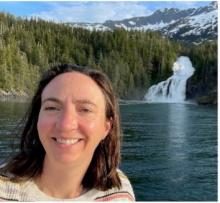
11:30 a.m. to 1:00 p.m. (PDT), Tuesday, July 26, 2022
Join us on ZoomGov

In case you missed it, the July 26 seminar was recorded and the presentations are posted below for review.
Seminar Details: The primary objective of environmental remediation is to reduce potential exposures to hazardous substances to acceptably safe levels. The determination of cleanup objectives frequently involves the adoption of existing standards, such as federal drinking water standards, even when such standards are more restrictive than warranted by the potential exposures associated with identified future use scenarios.
When remediation to the adopted standards is technically infeasible, economically prohibitive, and/or only achievable over long timeframes, it may be appropriate to establish risk-based cleanup standards. This approach is suitable for evaluating the adoption of appropriate or relevant and applicable requirements (ARARs), and for establishing cleanup objectives for sites where regulatory requirements are not well defined, such as sites with elevated levels of naturally occurring radioactive materials.
Involving stakeholders in the risk-based decision-making process will ensure that societal needs and constraints are addressed, along with the technical and economic constraints, to establish sustainable and equitable remediation.
Join our panel of speakers in examining opportunities and constraints related to identifying appropriate dose- and risk-based remediation objectives from both the site owner/operator and regulator perspectives.
"Using Risk Assessment to Guide Environmental Remediation Decisions" is from 11:30 a.m. to 1 p.m. PDT, Tuesday, July 26. Registration is free, click on ZoomGov to sign up in advance or join the event. The session is free and open to the public as part of the Center for the Remediation of Complex Sites (RemPlex) seminar series and is hosted in cooperation with the International Atomic Energy Agency ENVIRONET network.

Technical Basis for Risk-Informed Decision-Making, Vicky Freedman, Groundwater Remediation Program Manager, Sealaska Technical Services
This presentation provides historical context on human health risk radiation exposure guidance and its use as a basis for establishing environmental cleanup standards. Several national and international guidance documents provide health parameters used to calculate dose and assess risk, all representing different stages of an advancing science. The use of updated information on dosimetry, effective dose, and biokinetics affect the magnitude of dose and assessment of risk, which sets the stage for a broader discussion on risk-informed decision-making and environmental cleanup strategies.

Risk-Informed Groundwater Cleanup Levels for Low Energy Beta Emitting Radionuclides, Amoret Bunn, Environmental Engineer, Pacific Northwest National Laboratory
The geochemistry and transport behavior of low-energy beta emitters (iodine-129, technetium-99, chlorine-36, carbon-14, and tritium (H-3)) in the subsurface present significant challenges for remediation of groundwater to federal drinking water standards (DWS)—the appropriate or relevant and applicable requirements (ARARs) for cleanup. For some of the low-energy beta-emitter contaminants, particularly iodine-129, cleanup and restoration of groundwater to DWS may not be attainable within a reasonable timeframe using currently available treatment technologies. This presentation reviews multiple risk-based approaches for identifying risk-based concentration limits that could be considered for cleanup of groundwater contaminated with low-energy beta emitters, discussing the different approaches and their potential for use in management strategies at some DOE sites.

Risk and ARAR’s at Superfund Sites, A Regulator’s Perspective, Laura Buelow, Superfund Project Manager, U.S. Environmental Protection Agency, Region 10 Hanford Project Office
The Comprehensive Environmental Response, Compensation, and Liability Act (CERCLA, aka “Superfund”) governs the cleanup of contaminated sites in the United States. Setting cleanup levels under Superfund is a complex process that often results in site-specific levels. Superfund site managers must consider risk for current and future land uses and relevant federal, state, and local requirements. This presentation will identify the legal parameters that Superfund site managers must comply with and what flexibilities are available for site-specific cleanup levels.